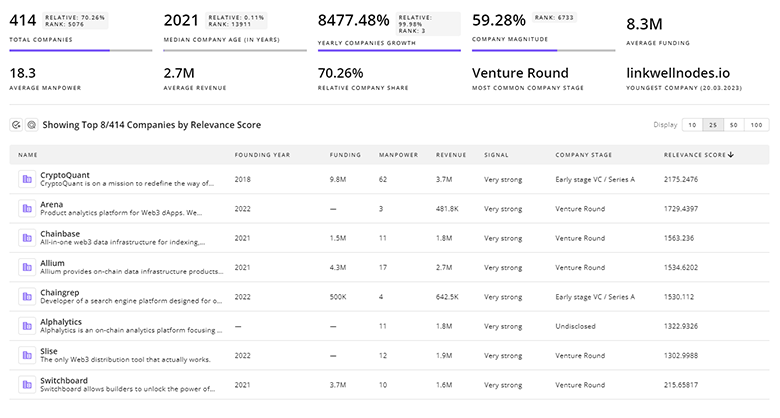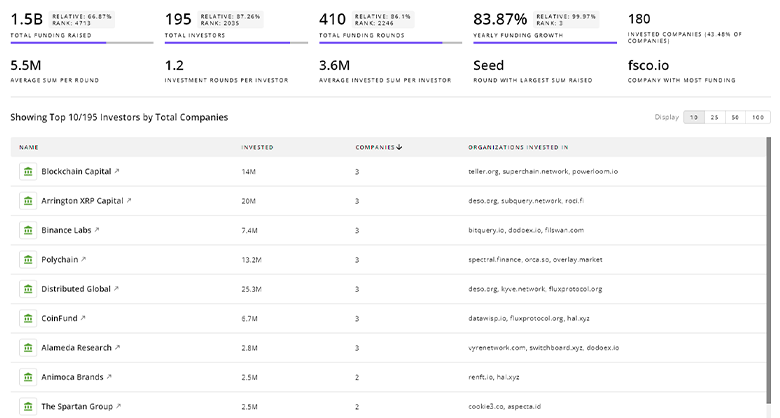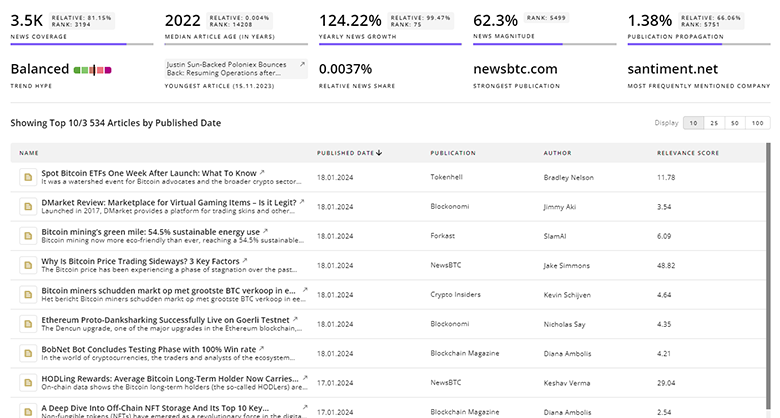
Crispr Report
: Analysis on the Market, Trends, and TechnologiesThe CRISPR ecosystem spans 15 933 publications and 1 031 active companies, while global market forecasts project a 21.3% CAGR to reach USD 11.71 billion by 2030 (CRISPR Genomic Cure Market Growing Assessment to Reach USD 11.71 Billion by 2030). Over 80% of clinical trials employ CRISPR/Cas9 for gene therapy development (CRISPR-Associated Nuclease Market Report: Trends, Forecast and …). Core applications—gene therapy, rapid diagnostics, trait-enhanced agriculture, functional genomic screening, and synthetic biomanufacturing—are converging with next-gen methods such as base and prime editing. Leading innovators are integrating AI for guide-RNA design and advanced delivery vectors, laying the groundwork for highly precise, scalable interventions across medicine, biotech, and agriculture.
We updated this report 39 days ago. Noticed something’s off? Let’s make it right together — reach out!
Topic Dominance Index of Crispr
The Topic Dominance Index trendline combines the share of voice distributions of Crispr from 3 data sources: published articles, founded companies, and global search
Key Activities and Applications
- Gene Therapy Development: Ex vivo and in vivo CRISPR therapies targeting hemoglobinopathies, oncology, and rare diseases, highlighted by CASGEVY’s recent approvals for sickle cell disease and beta thalassemia (This first CRISPR gene-editing treatment is just the beginning. Here’s what’s coming next).
- Diagnostics and Biosensing: CRISPR-based point-of-care tests for rapid pathogen and mutation detection, enabling viral diagnostics and cancer screening.
- Agricultural Biotechnology: Precision editing of crops for disease resistance, drought tolerance, and enhanced nutrition to bolster food security (Precision genome editing in plants to make them resilient to weather and resource changes, with state-of-the-art CRISPR/Cas9 technology.).
- Functional Genomic Screening: High-throughput CRISPR screens accelerate target identification and drug discovery by systematically perturbing genes (CRISPR/Cas effectors can provide multiple detections simultaneously).
- Industrial Biomanufacturing: Engineering microorganisms via CRISPR for production of biofuels, bioplastics, and specialty chemicals, underpinning next-generation synthetic biology platforms (CRISPR Technology Market, By Product (Enzymes, Kits & Reagents, Guide RNA, and Others)).
Emergent Trends and Core Insights
- Platform Consolidation: Major players are building integrated end-to-end CRISPR toolchains, marginalizing standalone services and pushing toward subscription-style, high-throughput platforms.
- Diversification of Nucleases: Beyond Cas9, ultracompact enzymes like Cas12f1 are gaining patents to enable editing in hard-to-transfect cells.
- AI-Driven Design: Machine-learning platforms are now generating and validating novel guide RNAs and predicting off-target profiles, dramatically cutting experimental cycles (AI expands the repertoire of CRISPR-associated proteins for genome editing).
- Advanced Delivery Systems: Lipid nanoparticles, engineered viral vectors, and non-viral peptides are emerging to improve tissue-specific targeting and reduce immunogenicity (New CRISPR systems expand research and biomedical applications upon original’s abilities).
- Precision Editing Modalities: Base and prime editors are moving from R&D to early trials, allowing single-base corrections without double-strand breaks.
Technologies and Methodologies
- CRISPR-Cas9: The foundational RNA-guided DNA nuclease enabling straightforward gene knock-in/out.
- CRISPR-Cas13: RNA-targeting system for transient transcriptome editing, opening avenues for non-permanent modulation (CRISPR-Cas13 emerges as a game changer in RNA-targeted therapies).
- Base Editing & Prime Editing: Technologies that facilitate precise nucleotide substitutions or small insertions/deletions without double-strand breaks.
- Epigenetic Editing: dCas9 fusions modify gene expression via histone or methylation changes, enabling tunable regulation.
- Delivery Platforms: AAV, LNPs, and novel polymer carriers ensure efficient in vivo delivery to specific cell types (Researchers develop the smallest CRISPR to date for genome editing).
- Bioinformatics & AI: Integrated computational suites predict guide specificity, model metabolic pathways, and accelerate novel nuclease discovery.
- High-Throughput Screening: CRISPR libraries coupled with next-gen sequencing facilitate genome-wide functional assays.
- Single-Cell Genomics: Coupling CRISPR perturbations with single-cell readouts quantifies editing outcomes at unprecedented resolution.
Crispr Funding
A total of 298 Crispr companies have received funding.
Overall, Crispr companies have raised $35.8B.
Companies within the Crispr domain have secured capital from 1.2K funding rounds.
The chart shows the funding trendline of Crispr companies over the last 5 years
Crispr Companies
- CRISPR Therapeutics has pioneered clinical translation of ex vivo CRISPR/Cas9 therapies, achieving the first approvals for CASGEVY® in sickle cell disease and beta thalassemia. With over USD 671 million raised and strategic partnerships (e.g., Vertex), it leads hemoglobinopathy and oncology programs, exemplifying how CRISPR moves from bench to bedside.
- Intellia Therapeutics, Inc. focuses on in vivo genome editing, targeting severe hereditary and metabolic diseases with proprietary lipid nanoparticle delivery of CRISPR/Cas9. Its USD 1.5 billion funding enables both preclinical pipeline expansion and pivotal clinical trials, positioning it at the forefront of curative gene therapies.
- Beam Therapeutics specializes in base editing—a precision method that converts single DNA bases without double-strand breaks. Since its 2020 IPO, it has raised USD 689 million to advance therapies in hematology, neurology, and oncology, demonstrating next-gen editing’s potential to correct point mutations seamlessly.
- Mammoth Biosciences leverages ultracompact Cas variants for both diagnostic tests and in vivo editing. Founded by Nobel laureate Jennifer Doudna, its enzymatic platforms enable decentralized diagnostics (e.g., CRISPR-based point-of-care assays) and in vivo pipelines, backed by USD 637 million in Series D funding.
- Synthego delivers end-to-end CRISPR solutions, from synthetic guide RNAs to automated delivery kits, supporting over 3 000 academic and industry labs. With USD 460 million in venture funding, its turnkey platforms democratize high-precision editing across research and therapeutic discovery.
Gain a better understanding of 1.1K companies that drive Crispr, how mature and well-funded these companies are.

1.1K Crispr Companies
Discover Crispr Companies, their Funding, Manpower, Revenues, Stages, and much more
Crispr Investors
Gain insights into 1.6K Crispr investors and investment deals. TrendFeedr’s investors tool presents an overview of investment trends and activities, helping create better investment strategies and partnerships.

1.6K Crispr Investors
Discover Crispr Investors, Funding Rounds, Invested Amounts, and Funding Growth
Crispr News
Gain a competitive advantage with access to 16.3K Crispr articles with TrendFeedr's News feature. The tool offers an extensive database of articles covering recent trends and past events in Crispr. This enables innovators and market leaders to make well-informed fact-based decisions.

16.3K Crispr News Articles
Discover Latest Crispr Articles, News Magnitude, Publication Propagation, Yearly Growth, and Strongest Publications
Executive Summary
CRISPR has matured from a laboratory curiosity into a multi-billion-dollar platform technology with deep applications in gene therapy, diagnostics, agriculture, and industrial biotechnology. Strong market growth projections, coupled with recent clinical approvals and breakthroughs in base and prime editing, underscore CRISPR’s strategic importance. As integrated platforms, AI-driven design, and advanced delivery systems scale, the next five years will likely see widespread adoption in personalized medicine and sustainable biomanufacturing. Stakeholders must navigate evolving regulatory landscapes and ensure rigorous safety validation to fully realize CRISPR’s promise of precise, accessible, and transformative genetic interventions.
We seek partnerships with industry experts to deliver actionable insights into trends and tech. Interested? Let us know!











